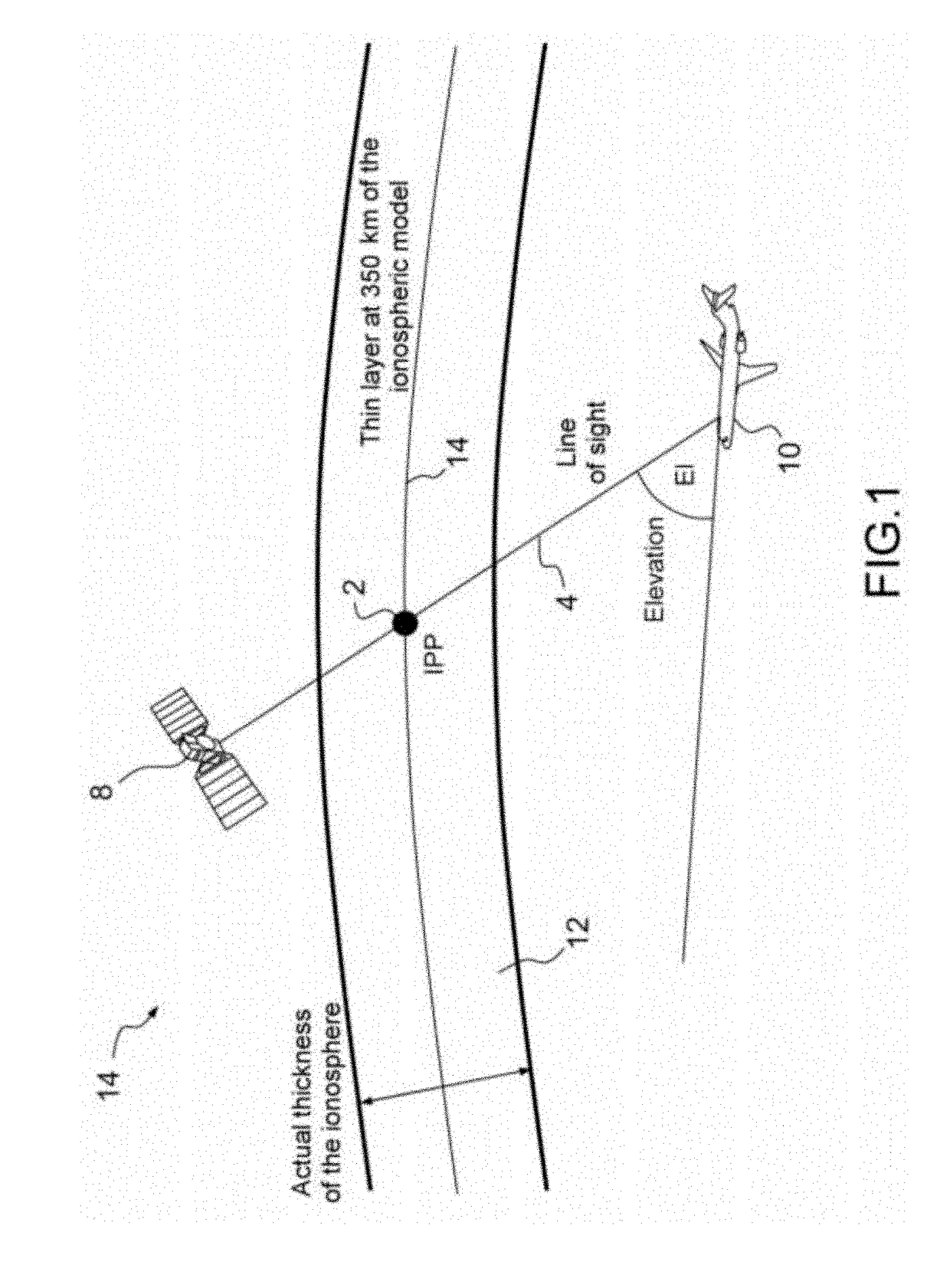Method for optimally adjusting give error bounds or for optimally computing the variances of residuals of igp points of an ionospheric grid for correcting an sbas system and sbas system for implementing said method
a technology of optimal adjustment and error bounds, applied in the field of method, can solve the problems of insufficient integration of civil aviation data, model turns out to be rather unreliable, and errors ranging from tens of metres in gps positioning error, so as to reduce the capacity of a user terminal and increase the risk
- Summary
- Abstract
- Description
- Claims
- Application Information
AI Technical Summary
Benefits of technology
Problems solved by technology
Method used
Image
Examples
first embodiment
[0280]According to the sixth step 220 and a first computation scheme, the distributed inflation of the GIVEk is implemented by a Conventional Least Squares scheme (CLSQ, standing for Classical or Conventional Least Squares) in which the distribution Yi of the ΔUIVEi2 of the IPPi considered over the associated IGPk is computed in a single sub-step with the aid of equation #16:
Yi=Hit·(Hi·Hit)−1·ΔUIVEi2
second embodiment
[0281]According to the sixth step 220 and a second computation scheme, the distributed inflation of the GIVEk is implemented by a Conventional Least Squares scheme followed by a specific fitting of the GIVEk for each IGPk of the point IPPi considered, dependent on a confidence level associated with the said IGPk. This second computation scheme is referred to as least square scheme adjusted through a confidence level (CALSQ, standing for Confidence Adjusted Least Squares).
[0282]In this second computation scheme, the same least squares computation scheme is firstly applied according to the same formulation as that used by the first computation scheme:
Yi=Hit·(Hi·Hit)−1·−ΔUIVEi2
[0283]Thereafter, once this first series of ΔGIVEk have been obtained, their value is refitted as a function of a confidence level allocated to each IGPk inheriting a ΔGIVEk, according to a Student's factor whose degree of freedom is equal to the number of IPPs situated in a predetermined neighbourhood of the IG...
third embodiment
[0291]According to the sixth step 220 and a third computation scheme, the distributed inflation of the GIVEk is implemented with a redistribution according to the confidence levels assigned to the IGPk associated with the IPPi considered. This third computation scheme is referred to as the least squares scheme weighted by the confidence levels (CWLSQ, standing for Confidence Weighted Least Squares).
[0292]In this third computation scheme, we firstly compute the same Student's factors tvk,α as those computed in the second computation scheme, associated respectively with the IGPk of the IPPi considered.
[0293]Next, on the basis of the Student's factors tvk,α computed, a diagonal matrix Pi is constructed by putting:
Pi=[q10000q20000q30000q4]
[0294]with
qk=(tvk,αG(p))2
associated with the IGPk, k varying from 1 to NIGP.
[0295]It will be noted that this matrix Pi is of size 4×4 when four IGPk are used for the interpolation of the delay at the IPPi. If only three IGPk are used, it will be a 3×3 ...
PUM
 Login to View More
Login to View More Abstract
Description
Claims
Application Information
 Login to View More
Login to View More - R&D
- Intellectual Property
- Life Sciences
- Materials
- Tech Scout
- Unparalleled Data Quality
- Higher Quality Content
- 60% Fewer Hallucinations
Browse by: Latest US Patents, China's latest patents, Technical Efficacy Thesaurus, Application Domain, Technology Topic, Popular Technical Reports.
© 2025 PatSnap. All rights reserved.Legal|Privacy policy|Modern Slavery Act Transparency Statement|Sitemap|About US| Contact US: help@patsnap.com



